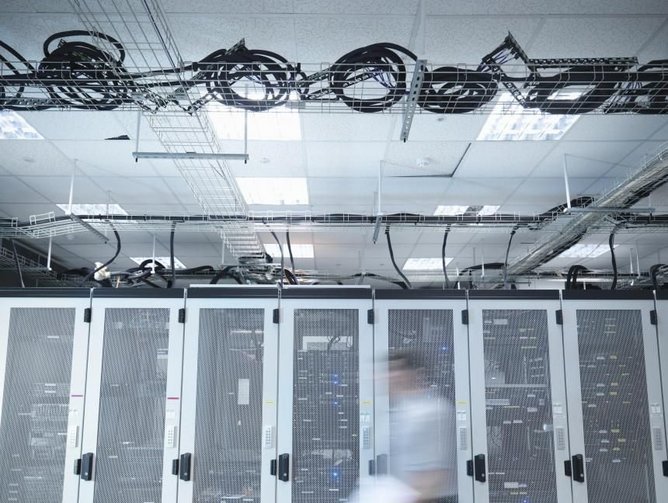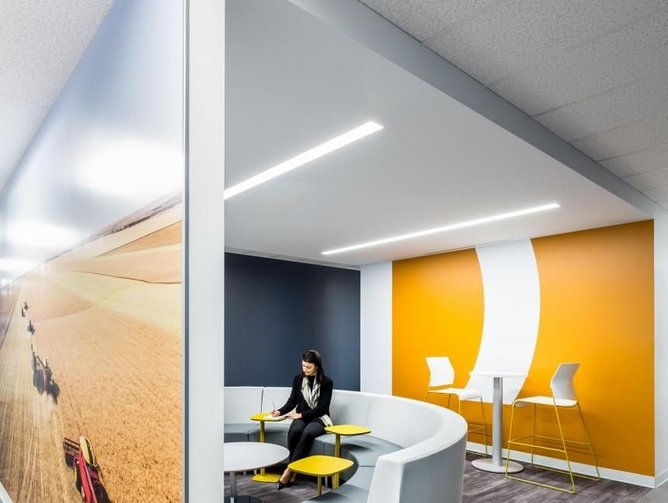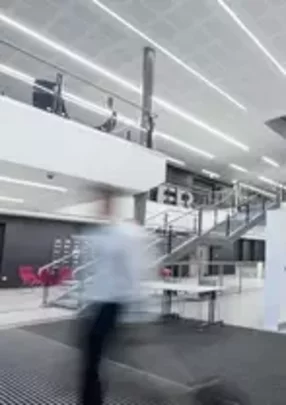WSP in Canada: IoT, 5G and building a smart, secure future
Today, more than half of humanity lives in cities. The United Nations predicts this proportion will rise to 68% by 2050, adding 2.5 billion people to the world’s urban areas. To promote successful coexistence within these increasingly congested jungles of glass and steel, city planners and developers in the public and private sectors are increasingly turning towards cutting-edge technology for solutions. “We’re standing at the dawn of another technological revolution, and keeping up with the speed of the coming change is key,” says Terri Govang, Director of Technology for Western Canada at WSP and an expert in smart building security systems.
Govang, who started her career as an electrician and progressed from roles in integration and manufacturing to design and consulting services, joined WSP in November 2018. With 60 years at the forefront of progress in the professional services space, WSP in Canada is now a leading supporter of the companies engineering our hyper-urbanized, interconnected, Internet of Things (IoT) and 5G- powered future. “At WSP, we have a Future Ready® program that offers our clients a clearer understanding of what the future will look like,” adds Sharyn Gravelle, National Vice President of Telecom and Technology at WSP in Canada. “We look at four different pillars: climate, society, resources and technology. We strive to make our designs ready, both for current design codes and for the future we envision. This is where we add value for our clients.” Gravelle and Govang sat down with us to explore the ways in which technology is reshaping the smart building space and how WSP is positioning itself to lead and benefit from the coming technological revolution.
CLOSE CLIENT PARTNERSHIPS
Commitment to continually improving the quality and effectiveness of processes, by educating both her team and her clients, is at the heart of Govang’s role. “The overall industry and the technology it employs has seen several changes over the last decade, and I’ve personally worked with hundreds of clients to educate and support them through these transitions,” she explains. “WSP has a long history of providing technology and telecom specialty services to an established client base. We strive to understand our clients’ business. Before commencing any design, it’s crucial to sit with the client in conversation about how they envision their building operationally.”
Working closely to develop a clear understanding of client expectations for everything from aesthetics to core system functionality is a key differentiator for WSP. “Our clients are competing to provide elegant buildings, packed with amenities and world-class technology,” says Govang. “Our focus is on offering the kind of strategic advisory services that support design and project management of enterprise security technologies and programs, with an emphasis on intelligent infrastructure in high-performance buildings, digital adoption and technological improvements.” As technology evolves, the demands of the market do as well. “Clients are more educated now than they’ve ever been,” Govang explains. “They have a greater understanding of technology, and these pioneers are ultimately seeking overall improvement in building performance, operational efficiencies, and improved user, employee and guest experiences.”
Working with a team of seasoned technology professionals, Govang is at the heart of WSP’s efforts to both increase the interconnectedness and technological capabilities of its clients’ buildings, and ensure that those clients remain safe in a rapidly-evolving threat landscape. “With more devices being connected to your network, security and integrity are often overlooked. With the digital era and the increasing adoption of IoT, yes, we can converge intelligence systems, capture analytics and connect buildings across the city. But as exciting as this may be, the technological revolution has brought with it a changing threat landscape,” she says. “If we disperse IoT devices all over a building, campus or city, the vulnerability points for potential attack increase drastically, so ensuring end-to-end encryption between all devices is increasingly important. In fact, I’d say it’s crucial.”
A STRATEGIC IMPERATIVE
Alongside the evolution of intelligent business systems, the need for integrated security has grown, to the point where Govang argues it is no longer a technological issue, but a managerial and strategic one. In the past, Govang often encountered organizational tendencies to sacrifice technology and security investment for the sake of perceived convenience and cost. Today, that simply isn’t an option.
“Above all else, a smart building is a secure building,” she says. “We use technology to create open and secure spaces, improve the flow of traffic or people and deliver a more sustainable, reliable solution. Clients want to leverage their investments to create new use cases, improve the customer experience, reduce waste, reduce risk, increase compliance and drive efficiency through new and emerging technologies.” The driving capability behind all these improvements that WSP is delivering is the ability to gather more high-quality data than ever before.
“It wasn’t long ago that cameras were used to capture general overviews, which helped deter and reactively review safety or security in spaces. That’s all changed,” says Govang. Working alongside one of its partners, Axis Communications, WSP is using IoT-enabled devices in order to provide its clients with better insights pulled from larger, more sensitive networks. Then, Big Data analytics allow WSP to draw actionable insights from that data. “What’s great about this is that all Axis devices support the application platform, which enables developers to leverage a lot of device processing power, which helps edge-based analytics that enable the camera to do more than it ever could before,” enthuses Govang.
Looking to the future, both Govang and Gravelle see the capacity for smart buildings to increase efficiency, security and comfort as a key driver of the digital evolution of urban environments. “The market is evolving towards 5G and IoT — IoT being both massive IoT for large scale applications, and critical IoT for latency and other sensitive, niche applications,” says Gravelle. And as with any major paradigm shift, this evolution has rendered old practices obsolete. “Change is certainly the one thing that is constant,” says Govang. “Gone are the days when technology and security were a nice-to-have extra option. Technology has become the modern critical infrastructure.”





